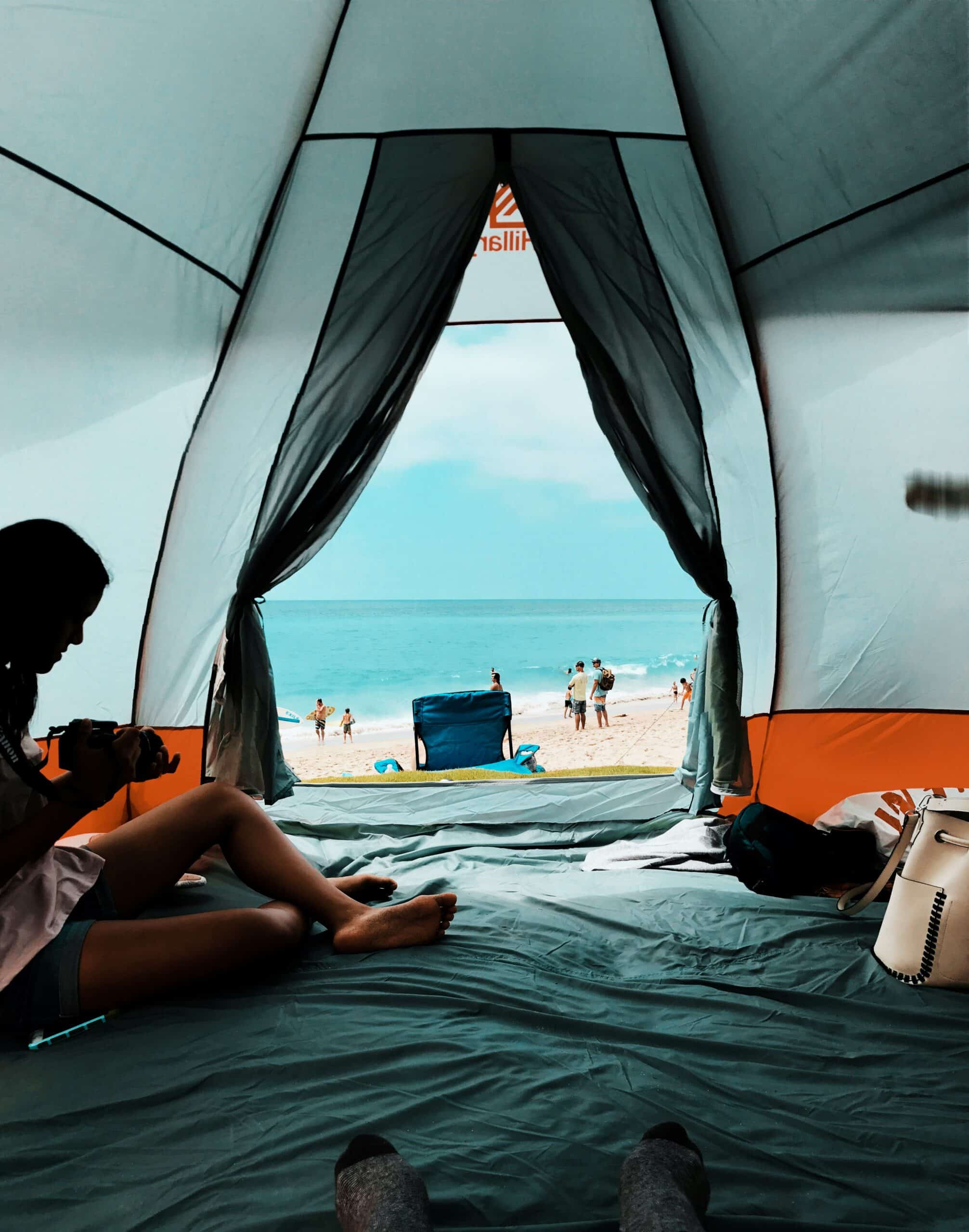Planning a company retreat can be challenging. How do you ensure it’s both productive and enjoyable for your employees? This guide will show you how to use event rentals to create a seamless corporate retreat experience. We’ll cover choosing the right rental services, essential equipment for team-building activities, and managing on-site details. Whether you’re planning a wine-tasting event or seeking unique corporate retreat locations, you’ll learn how to achieve your retreat goals efficiently and cost-effectively.
Key Takeaways
- Clear goals and objectives guide the entire retreat planning process
- Selecting the right venue and event rentals is crucial for a successful retreat
- Interactive workshops and recreational activities foster team-building and collaboration
- Efficient on-site management ensures a smooth and productive retreat experience
- Post-retreat follow-up helps maximize the event’s impact and improve future retreats
Planning the Perfect Company Retreat With Event Rentals

Planning a company retreat in the United States requires careful strategic planning. This section covers defining retreat goals, selecting an ideal venue, setting a budget for event rentals, creating a detailed agenda, and coordinating logistics. These steps ensure a smooth and engaging team experience and offer a unique view into an effective retreat organization.
Defining Goals and Objectives for Your Retreat
Defining clear goals and objectives is crucial for a successful company retreat. Whether the aim is to boost productivity, foster team bonding, or brainstorm new strategies, these objectives guide the entire planning process. Companies may choose scenic locations like valleys or mountain resorts to inspire creativity while managing expenses. By aligning retreat activities with specific goals, organizations can ensure a meaningful and impactful experience for all participants.
Selecting an Ideal Venue for Team Engagement
Selecting the right venue is crucial for a successful corporate retreat. Companies should consider meeting spaces that offer ample room for group activities and breakout sessions. provides numerous options for corporate events, from mountain resorts to urban conference centers. The chosen space should align with the retreat’s goals and accommodate the team’s size while offering amenities that enhance engagement and productivity.
Setting a Realistic Budget for Event Rentals
Setting a realistic budget for event rentals is essential for a successful company retreat. Organizers should consider costs for accommodations, meals, and bathroom facilities. By allocating funds wisely, companies can ensure comfortable lodging and necessary amenities without overspending.
Crafting a Detailed Agenda and Timeline
A well-crafted agenda balances work and leisure activities, incorporating elements of wilderness exploration and natural beauty. Organizers should schedule team-building exercises like ropes courses alongside mindfulness sessions and catering breaks. This approach ensures a productive retreat that leverages the environment to foster creativity and collaboration.
Coordinating Travel and Accommodation Logistics
Coordinating travel and accommodation logistics is crucial for a successful company retreat. Event planners should select retreat locations that offer comfortable vacation rentals or estates to host the team. They must arrange transportation to and from the venue, considering factors like proximity to airports and local attractions. Booking suitable accommodations, such as spacious vacation homes or resorts, ensures participants have a relaxing environment during their stay. A well-organized retreat allows companies to focus on team-building activities without worrying about logistical details:
Choosing the Right Event Rental Services

Selecting the right event rental services is crucial for a successful company retreat. This section covers identifying rental needs, researching providers, comparing packages, understanding policies, and scheduling deliveries. These steps ensure a smooth experience for the community at any resort.
Identifying Your Event Rental Needs
Identifying event rental needs is crucial for successful company retreats. Organizers should consider the number of attendees the venue sleeps, entertainment options, and available budget. They must reserve necessary equipment, such as audiovisual gear, furniture, and outdoor amenities, to support planned activities and ensure comfort for all participants.
Researching Reliable Rental Providers
Researching reliable rental providers is essential for a successful company retreat. Event planners should look for companies that offer a wide range of services. A skilled facilitator can help evaluate providers based on their experience, reputation, and ability to meet specific retreat needs. Organizers should consider the following factors when selecting a rental provider:
Comparing Rental Packages and Options
When comparing rental packages for company retreats, organizers should consider options that blend productivity with relaxation. Some venues offer diverse venues that spark creativity and teamwork, while others provide serene settings for yoga sessions. Event planners must evaluate each package’s ability to meet their specific retreat goals, whether it’s fostering innovation in an urban environment or promoting wellness in a rural setting. By carefully assessing the offerings, companies can select a package that aligns with their objectives and budget.
Understanding Rental Policies and Agreements
Understanding rental policies and agreements is crucial for effective management of corporate team building events. Event planners must carefully review terms related to outdoor recreation activities, concierge services, and leadership programs. Key aspects to consider include:
- Cancellation policies and fees
- Damage liability and insurance requirements
- Usage restrictions for rented equipment
- Payment terms and deposit requirements
- Setup and breakdown responsibilities
Scheduling Deliveries and Setup Times
Scheduling deliveries and setup times is crucial for a smooth company retreat experience. Event planners should coordinate with rental providers to ensure all necessary equipment, from kitchen appliances to cultural decor, arrives and is set up well before the retreat begins. This advance preparation helps control costs and allows organizers to focus on creating a memorable vacation-like atmosphere for participants, enhancing the overall retreat experience.
Essential Event Rentals for a Seamless Experience

Essential event rentals ensure a seamless company retreat experience. From audio-visual equipment for presentations to comfortable seating and outdoor tents, these rentals enhance corporate events. Decorative elements and catering equipment create the right atmosphere for brainstorming and team-building. Each rental type plays a crucial role in fostering productivity and beauty during corporate retreats.
Audio-Visual Equipment for Presentations
Proper audio-visual equipment is essential for effective presentations during corporate retreats. Retreat venues should provide high-quality projectors, screens, and sound systems to ensure clear communication for the entire team. These tools support various activities, from health and wellness seminars to wine tasting workshops, enhancing the overall experience of corporate retreats. Well-equipped spaces allow for seamless transitions between different types of sessions:
Comfortable Seating and Furniture Options
Comfortable seating and furniture options are essential for fostering collaboration and innovation during company retreats. Whether the event takes place at a ranch or an offsite location, providing ergonomic chairs, versatile tables, and lounge areas creates an environment conducive to team building activities. Event planners should select furniture that supports various session formats, from brainstorming huddles to formal presentations, ensuring participants remain engaged and productive throughout the retreat.
Tents and Canopies for Outdoor Activities
Tents and canopies provide essential shelter for outdoor activities during company retreats, boosting morale and creating unique spaces for team building. These versatile structures protect participants from the elements while allowing them to enjoy the natural surroundings. Event planners can use tents of various sizes to accommodate different group activities, from intimate brainstorming sessions to large-scale presentations, ensuring a comfortable and productive outdoor experience.
Decorative Elements to Enhance the Atmosphere
Decorative elements play a crucial role in enhancing the atmosphere of company retreats. Event planners can use lighting, banners, and themed decor to create a cohesive and inspiring environment that aligns with the retreat’s goals. These elements help set the tone for the event, whether it’s a professional conference-style setting or a more relaxed, creative atmosphere.
Catering Equipment for Meals and Refreshments
Catering equipment rentals are essential for providing meals and refreshments during company retreats. Event planners should secure adequate serving stations, chafing dishes, and utensils to accommodate the group’s size and dietary needs. These rentals ensure efficient food service and maintain food quality and temperature throughout the event, which contributes to participant satisfaction and overall retreat success.
Enhancing Team Building Through Engaging Activities

Enhancing team building during company retreats involves strategic activities. This section covers interactive workshops, recreational events, collaborative projects using technology, networking opportunities, and team achievement recognition. These elements create a well-rounded retreat experience, fostering teamwork and employee engagement through varied and purposeful activities.
Incorporating Interactive Workshops
Interactive workshops play a crucial role in company retreats, fostering collaboration and skill development. Event planners can organize sessions on topics like problem-solving, communication, or industry-specific skills, using rented audiovisual equipment to enhance presentations. These workshops encourage active participation, allowing team members to learn from each other and apply new knowledge in a supportive environment.
Planning Recreational Events and Games
Planning recreational events and games enhances team building during company retreats. Event planners can organize outdoor activities like scavenger hunts or indoor competitions using rented equipment. These engaging activities foster collaboration, boost morale, and provide a fun break from work-related discussions, contributing to a well-rounded retreat experience.
Utilizing Technology for Collaborative Projects
Technology plays a vital role in collaborative projects during company retreats. Event organizers can rent tablets, interactive whiteboards, or videoconferencing equipment to facilitate group work. These tools enable teams to brainstorm ideas, share documents, and present findings in real-time, enhancing productivity and engagement. By incorporating technology, companies can create dynamic, interactive sessions that foster innovation and teamwork.
Facilitating Networking Opportunities
Facilitating networking opportunities is crucial for company retreats. Event planners can create designated spaces with comfortable seating arrangements and refreshment stations to encourage informal interactions among team members. These areas allow employees from different departments to mingle, share ideas, and build relationships outside of structured activities, fostering a sense of community within the organization.
Recognizing and Rewarding Team Achievements
Recognizing and rewarding team achievements is a crucial element of successful company retreats. Event planners can arrange award ceremonies using rented stages and audio equipment to celebrate individual and group accomplishments. These events boost morale, reinforce positive behaviors, and motivate employees to continue their excellent work. By acknowledging team efforts in a public setting, companies foster a culture of appreciation and encourage ongoing collaboration among staff members.
Managing on-Site Details Efficiently

Efficient on-site management is crucial for a successful company retreat. This section covers overseeing event setup, ensuring technical support, maintaining vendor communication, handling challenges, and keeping attendees engaged. These key aspects help create a smooth and productive retreat experience, maximizing the value of event rentals and fostering team collaboration.
Overseeing Event Setup and Breakdown
Overseeing event setup and breakdown is crucial for a smooth company retreat. Event managers should create a detailed timeline, coordinating with vendors to ensure all rentals are delivered and set up on schedule. They must supervise the arrangement of audiovisual equipment, furniture, and decor according to the planned layout. After the retreat, managers should oversee the prompt dismantling and return of rented items, conducting a final venue inspection to avoid additional charges.
Ensuring Technical Support Is Available
Ensuring technical support is available is crucial for a smooth company retreat. Event organizers should arrange for on-site IT personnel to handle any technical issues that may arise during presentations or team-building activities. They should also create a backup plan for equipment failures, including spare projectors, laptops, and audio systems. This proactive approach minimizes disruptions and maintains the retreat’s productivity:
Maintaining Open Communication With Vendors
Maintaining open communication with vendors is essential for managing on-site details efficiently during a company retreat. Event organizers should establish clear channels for real-time updates and issue resolution with all service providers. Regular check-ins throughout the event ensure that any problems are addressed promptly, minimizing disruptions to the retreat schedule. Effective vendor communication involves:
- Designating a primary point of contact for each vendor
- Setting up a shared communication platform for quick updates
- Scheduling brief daily meetings to address any concerns
- Providing vendors with a detailed event timeline and expectations
- Establishing a protocol for handling last-minute changes or emergencies
Handling Unexpected Challenges Calmly
Event organizers must handle unexpected challenges calmly during company retreats. They should have a contingency plan for common issues like equipment failures or weather changes. Quick thinking and adaptability are crucial for resolving problems without disrupting the retreat schedule. By maintaining a calm demeanor, event managers can reassure attendees and keep the focus on team-building activities.
Keeping Attendees Informed and Engaged
Keeping attendees informed and engaged is crucial for a successful company retreat. Event organizers should use digital signage and mobile apps to provide real-time updates on schedules, room changes, and activities. They can also incorporate interactive elements like live polls or Q&A sessions during presentations to maintain participant interest. By regularly communicating important information and encouraging active participation, event managers ensure that attendees remain focused and derive maximum value from the retreat experience.
Post-Retreat Follow-Up and Next Steps

Post-retreat follow-up is essential for maximizing the event’s impact. This section covers gathering participant feedback, evaluating objective success, returning rentals, reflecting on improvements, and sustaining team morale. These steps ensure the retreat’s benefits continue long after the event, helping companies refine future retreats and maintain team engagement.
Gathering Feedback From Participants
Gathering feedback from participants is a crucial step in the post-retreat process. Event organizers should distribute surveys or conduct interviews to collect insights on the retreat’s effectiveness, including the quality of event rentals and activities. This feedback helps companies assess the retreat’s impact on team dynamics and identify areas for improvement in future events.
Evaluating the Success of Retreat Objectives
Evaluating the success of retreat objectives involves analyzing key performance indicators aligned with the event’s goals. Event organizers should review data on team productivity, collaboration levels, and individual skill development post-retreat. They can compare these metrics to pre-retreat baselines to measure the event’s impact on company culture and employee engagement. This evaluation helps determine the effectiveness of chosen activities and event rentals in achieving the retreat’s objectives.
Returning Rental Items Promptly and Safely
Returning rental items promptly and safely is crucial for maintaining good relationships with vendors and avoiding additional charges. Event organizers should create a detailed inventory checklist to ensure all rented equipment is accounted for and in good condition before returning. They should coordinate with the rental company to schedule a convenient pickup time, ensuring all items are properly packed and ready for transport. A systematic approach to returning rentals helps streamline the post-retreat process:
Reflecting on Improvements for Future Events
Reflecting on improvements for future events is a crucial step in the post-retreat process. Event organizers should analyze participant feedback, budget allocation, and logistical challenges to identify areas for enhancement. They can use this information to refine event rental selections, optimize activity schedules, and improve venue choices for upcoming retreats. By continuously evaluating and adjusting their approach, companies can ensure each subsequent retreat delivers greater value and impact for their teams.
Sustaining Team Morale After the Retreat
Sustaining team morale after the retreat is essential for long-term success. Event organizers can implement follow-up activities, such as regular check-ins or virtual team-building exercises, to maintain the momentum generated during the retreat. They should also encourage teams to apply newly learned skills and strategies in their daily work, reinforcing the retreat’s lessons and fostering a continued sense of unity and purpose among employees.
Conclusion
Organizing a seamless company retreat with event rentals is crucial for fostering team collaboration, enhancing productivity, and achieving organizational goals. Careful planning, from defining clear objectives to selecting the right venue and rental services, lays the foundation for a successful retreat experience. Incorporating engaging activities, managing on-site details efficiently, and utilizing appropriate event rentals create an environment conducive to team building and innovation. Post-retreat follow-up ensures the event’s impact continues long after its conclusion, ultimately contributing to sustained team morale and improved company culture.

